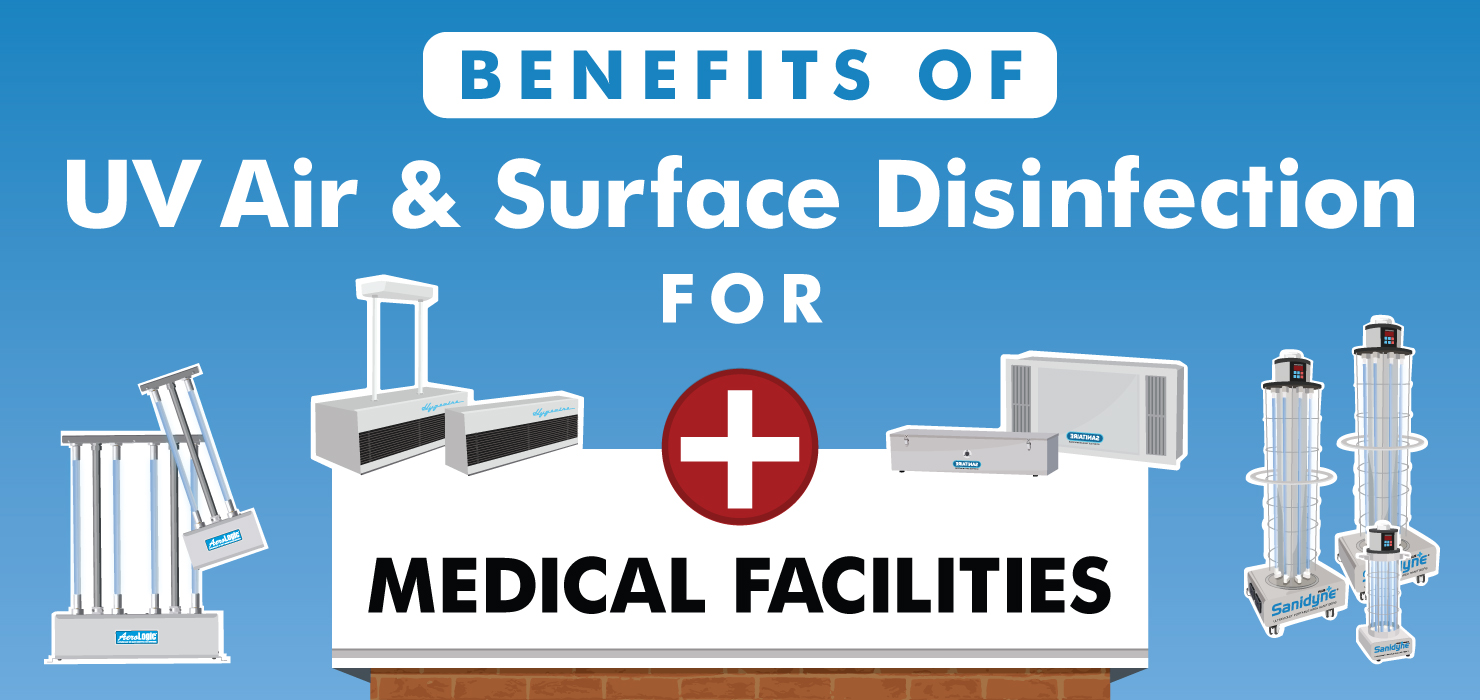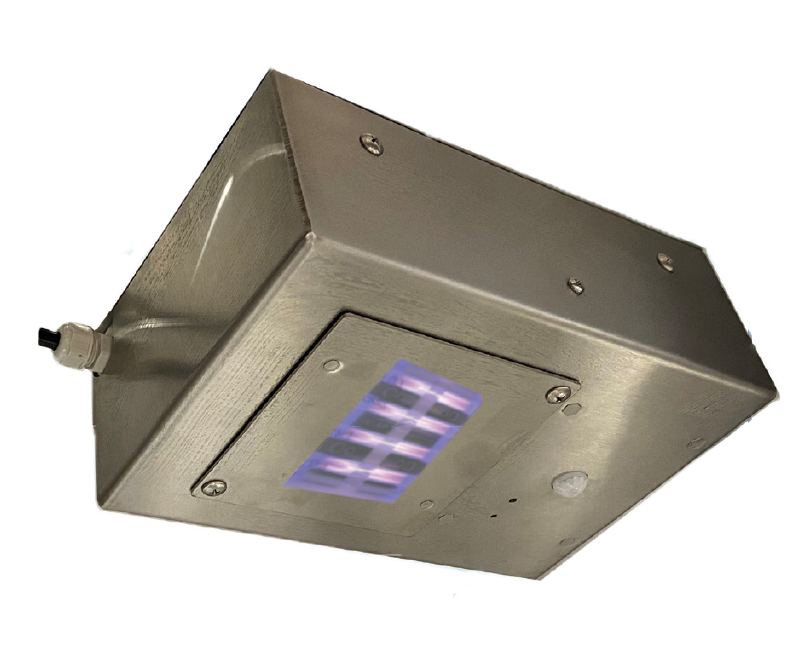UV Surface Disinfection Techniques: Making Best Use Of Effectiveness for Germ-Free Spaces
UV Surface Disinfection Techniques: Making Best Use Of Effectiveness for Germ-Free Spaces
Blog Article
Revealing the Advantages of UV Sanitation: Ensuring Tidy and Sanitized Spaces
In the age of enhanced understanding surrounding health and tidiness, the relevance of efficient disinfection methods can not be overemphasized. While typical cleansing methods have actually long been trusted, improvements in technology have presented an ingenious remedy that makes certain tidy and sanitized areas: UV sanitation. By harnessing the power of ultraviolet light, this method has actually obtained recognition for its capability to remove hazardous virus and provide a thorough sanitization process. The advantages of UV disinfection prolong much past its efficiency. This discussion will explore the science behind UV disinfection, its performance on numerous virus, its applications in various settings, and the advantages it holds over traditional methods. Furthermore, we will dig right into the safety and security considerations that must be considered when executing UV disinfection. Prepare to discover a new dimension of tidiness and find the untapped capacity of UV disinfection.

The Scientific Research Behind UV Disinfection
UV disinfection is a clinically tried and tested method that uses ultraviolet light to remove hazardous microbes from surfaces and water. The science behind UV disinfection exists in the capacity of UV-C light to harm the DNA and RNA of microorganisms, making them not able to duplicate and causing their eventual fatality. UV-C light falls within the wavelength variety of 200 to 280 nanometers, which is extremely efficient in damaging microorganisms, infections, and various other pathogens.
When exposed to UV-C light, the genetic material of bacteria takes in the energy from the light, causing the development of thymine dimers. These dimers interrupt the regular duplication and transcription procedures of the microbes, hindering their capability to reproduce and survive (uv surface disinfection). The DNA and RNA damage triggered by UV-C light is dangerous to the microbes, making UV sanitation a reliable and reliable approach for eliminating a large variety of microorganisms
UV disinfection is particularly advantageous in environments where traditional chemical anti-bacterials might be ineffective or impractical. It is a non-chemical approach that does not leave any kind of residues or hazardous by-products, making it secure for usage in food processing, healthcare centers, water treatment plants, and various other sectors. Moreover, UV disinfection is eco-friendly, as it does not add to the development of antibiotic-resistant microorganisms or other hazardous toxins.
Effectiveness of UV Sanitation on Pathogens
The performance of UV disinfection in removing microorganisms has been thoroughly studied and confirmed in various clinical research studies. UV radiation has the ability to suspend a wide variety of microorganisms, consisting of fungi, microorganisms, and viruses, by harming their DNA or RNA. This avoids them from duplicating and causing infections.
One research study released in the American Journal of Infection Control found that UV disinfection worked in decreasing the visibility of multiple drug-resistant germs in medical facility areas. Another study carried out by the National Institute for Occupational Safety and security and Health demonstrated that UV sanitation had the ability to eliminate 99.9% of the influenza virus on surface areas.
UV disinfection has additionally revealed guarantee in combating the spread of healthcare-associated infections (HAIs) According to a research study released in The Lancet, using UV-C light in addition to typical cleaning protocols substantially minimized the incidence of HAIs in a healthcare facility setting.
Furthermore, UV disinfection has actually proven to be effective against emerging virus, such as the extreme intense respiratory syndrome coronavirus 2 (SARS-CoV-2), which causes COVID-19. A study carried out by the National Emerging Transmittable Diseases Laboratories demonstrated that UV-C light can inactivate the infection on surface areas within secs.
Applications of UV Sanitation in Various Setups
With its tried and tested performance in removing virus, UV sanitation has discovered applications in a range of settings. One of one of the most usual locations where UV sanitation is used is in healthcare centers. UV modern technology is made use of to sanitize individual spaces, operating areas, and various other high-touch surface areas, minimizing the danger of healthcare-associated infections. Additionally, UV sanitation is additionally being carried out in food processing plants and restaurants to make certain the safety and security of foodstuff and avoid the spread of foodborne diseases. UV disinfection is additionally valuable in water therapy plants, where it is utilized to eliminate harmful microbes and supply secure drinking water.
One more essential application of UV sanitation impends filtration industry. UV air cleansers are used in household, commercial, and commercial settings to get rid of air-borne germs, infections, and mold spores. This innovation is particularly beneficial in environments where people are extra vulnerable to respiratory system infections, such as healthcare facilities, colleges, and office complex.
Moreover, UV disinfection is significantly being used in mass transit systems, such as trains and buses, to maintain clean and disinfected rooms for passengers. UV light is utilized to decontaminate surface areas useful link and air inside the vehicles, decreasing the danger of spreading out infectious diseases.
Advantages of UV Sanitation Over Typical Approaches
In comparison to standard approaches, UV disinfection provides a series of distinctive advantages that make it a more effective selection in various industries and setups. One substantial benefit is its effectiveness against a broad variety of microbes, consisting of germs, fungi, and infections. Unlike chemical anti-bacterials that might have restricted effectiveness versus specific microorganisms, UV disinfection is a non-selective process that can kill or inactivate a broad spectrum of hazardous organisms.
One more benefit of UV disinfection is its capability to offer fast and effective disinfection. Traditional sanitation approaches usually call for longer call times or several steps to achieve the desired level of sanitation. In comparison, UV light can supply instant and constant disinfection, decreasing downtime and enhancing productivity in numerous applications.
UV sanitation also offers a secure and eco-friendly alternative to traditional sanitation techniques. uv surface disinfection. Unlike chemical agents, UV light does not leave any type of harmful deposits or spin-offs, making it suitable for usage in sensitive settings such as food processing centers, health care settings, and water therapy plants
Additionally, UV sanitation is a cost-efficient service over time. While the in advance investment for UV sanitation systems may be more than traditional approaches, the operational prices are usually reduced. UV lamps have a lengthy lifespan and call for minimal upkeep, resulting in minimized labor and replacement expenses.
Safety And Security Considerations for UV Sanitation
Considering the possible risks linked with UV disinfection, it is vital to address the security factors to consider associated with executing this modern technology. UV disinfection uses ultraviolet light to eliminate or inactivate bacteria, making it a reliable method for sterilizing numerous surfaces and objects. It is crucial to recognize that UV radiation can additionally pose risks to human health and wellness if correct safety and security measures are not followed.
First and primary, straight exposure to UV radiation can trigger injury to the skin and eyes. Long term direct exposure can cause sunburn, skin damages, and also a raised threat of developing skin cancer. It is critical to make certain that UV sanitation systems are effectively enclosed and geared up with safety and security attributes such as automated shut-off devices or activity sensing units to protect against accidental direct exposure.

In addition, appropriate training and education are necessary check this site out for those accountable for running UV disinfection systems. They need to be conscious of the potential dangers, understand the safety and security protocols, and recognize how to take care of and maintain the tools correctly.
Final Thought
UV disinfection can be applied in various settings, including health care centers, food handling plants, and water therapy systems. Contrasted to traditional methods, UV disinfection has advantages such as faster disinfection times, marginal chemical use, and no harmful byproducts.
UV disinfection is a scientifically tested technique that makes use of ultraviolet light to remove dangerous microbes from surface areas and water. The DNA and RNA damage created by UV-C light is dangerous to the microbes, making UV disinfection a effective and dependable approach for eliminating a large range of microorganisms.
One more advantage of UV disinfection is its capability to offer fast and Home Page efficient sanitation. UV sanitation uses ultraviolet light to kill or inactivate microorganisms, making it a reliable approach for sterilizing different surfaces and things. Contrasted to standard techniques, UV disinfection has benefits such as faster sanitation times, minimal chemical use, and no unsafe results.
Report this page